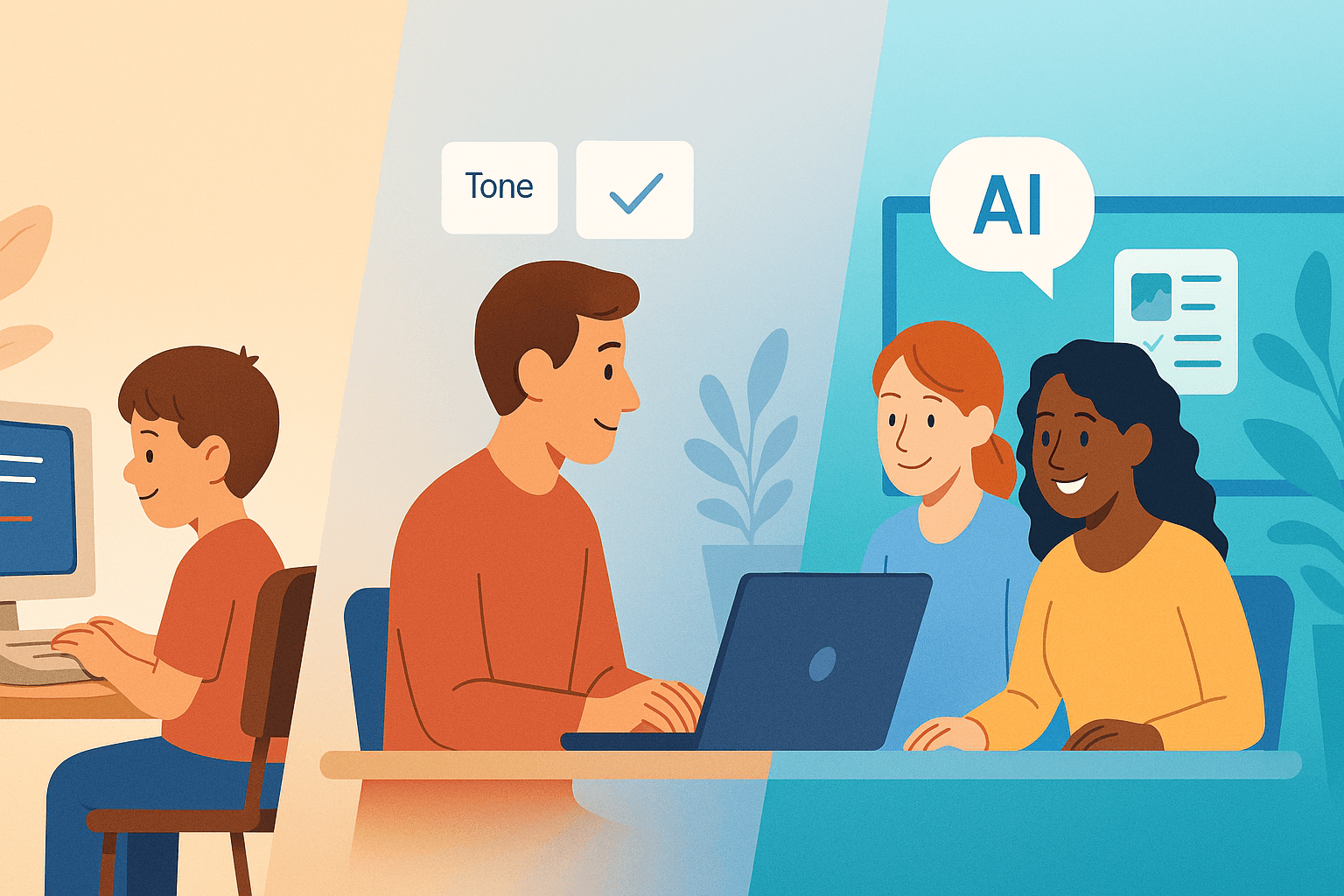5 min
Dec 17, 2022
Predictive artificial intelligence assists instructional designers to focus on what matters most—building meaningful, transformative learning experiences.
Coleman Numbers

Hey, all. This is Coleman from the Mindsmith team. A couple of months ago we heard from Jason McDonald, an ID professor at Brigham Young University, about the various roles of instructional designers—this multifarious profession that requires “an extremely experimental attitude about education”.
We aren’t afraid to admit that we don’t know everything, and we’re grateful when you can fill us in on how to do what we’re doing better.
In that spirit, we wanted to follow up on Dr. McDonald’s post with an exploration, in broad strokes, of an “extremely experimental” thing we’re trying out and that we’re excited to release for public testing—AI-driven course generation.
Unless you’ve been living under a rock, you’re probably aware of “superstar” AIs like ChatGPT and the machine learning systems behind products like Jasper.ai and Grammarly. These tools are cranium-explodingly powerful, and, I’ll be frank, a little terrifying(especially for, like, all of us in the laptop-jockey class who make our living playing protracted syntactical games).
We’re excited to share more about our own AI partner, BookerAI—which you can work with here—but first, we wanted to set the table by discussing, generally, why we’re driving to implement this new technology in instructional design.
Artificial intelligence (AI) and machine learning are rapidly becoming essential tools for instructional designers and e-Learning professionals. These technologies allow us to create dynamic, personalized learning experiences that engage and motivate learners.
One of the key benefits of using AI in instructional design is that it can handle many of the tedious, time-consuming tasks that are typically associated with creating e-Learning content. Markus Bernhardt and Clark Quinn identify where this efficiency gain comes from:
At the heart of these new capabilities is the advancement of AI technologies to the stage of semantic processing. That is, it can process information and sort it into modules and competencies, completely objectively, or if required around an existing framework. For instance, a system can process a corpus of text and do several important things:
Lay out the knowledge/content structure, in breadth and depth
Identify content gaps, assess content variability, and assess question coverage
Suggest questions about the content
Answer questions about the content
Identify learning competencies from the content, or fit the learning into an existing framework of competencies
As Bernhardt and Quinn point out later in their article, this frees up instructional designers to focus on the most important aspect of their work: building meaningful, transformative learning experiences that help learners achieve their goals.
Another advantage of using AI in instructional design is that it makes it much easier for non-instructional designers to create high-quality e-Learning content. This is especially useful for organizations that want to build their own custom learning programs but don't have the expertise or resources to do so.
With the help of AI, anyone can create professional-grade e-Learning courses that are tailored to the needs of their audience. Sameer Maskey, Columbia University adjunct and founder of Fusemachines, notes that the “rich data” capabilities of AI systems—their ability to “process information more quickly and in larger quantities than humans do”—will make for more personalized learning experiences. “If an art history student is struggling with a certain topic,” Maskey writes,
an AI engine can recommend materials that past art history students have benefitted from. It may also recommend classes that other art history students have taken and liked. This could allow students to exercise more autonomy by learning at their own pace and playing an active role in what they learn.
Finally, AI can also help instructional designers align their lessons with state and federal standards, ensuring that they meet all relevant regulatory requirements. This is especially important for e-Learning professionals working in the education sector, ensuring that their courses are both effective and compliant.
To wrap this all up with a nice little 3D-printed silicon bow designed by a gift-optimizing AI—predictive artificial intelligence is a powerful tool that can assist instructional designers in creating meaningful, transformative learning experiences.
By handling the grunt work of content creation and making course building accessible to non-IDs, AI will democratize the e-Learning industry and open design to all sorts of new stakeholders.
Join the AI-assisted revolution with BookerAI.
Artificial intelligence is here to stay. I’m sure no one had doubts about that, but one of my main mechanisms for coping with paradigm-wrecking revelations is to incessantly restate the obvious. These technologies have the power to reshape every part of our world, instructional design being no exception.
Case in point: the original draft of this post’s body was generated by ChatGPT. My contributions mostly consisted of adding meaningful sources and tightening up the language, such as it is. Did my writerly confidence take a hit? Sure. Did it save me many hours of staring at a blank white screen and agonizing over how to start a blog post on AI? Definitely.
Sources:
(1) Bernhardt, Markus and Quinn,Clark, “The Future of ID in an AI World”. https://www.learningguild.com/articles/the-future-of-id-in-an-ai-world/?rd=1 Learning Guild, March 2022. Bernhardt is the chief evangelist of the Orbizum Group and Quinn is the executive director of Quinnovation.
(2) Maskey, Sameer. “Artificial Intelligence In Education Transformation”. https://www.forbes.com/sites /forbestechcouncil/2020/06/08/artificial-intelligence-in-education-transformation /?sh=e1c399e32a4e Forbes. Maskey is also a member of the Forbes Technology Council.



